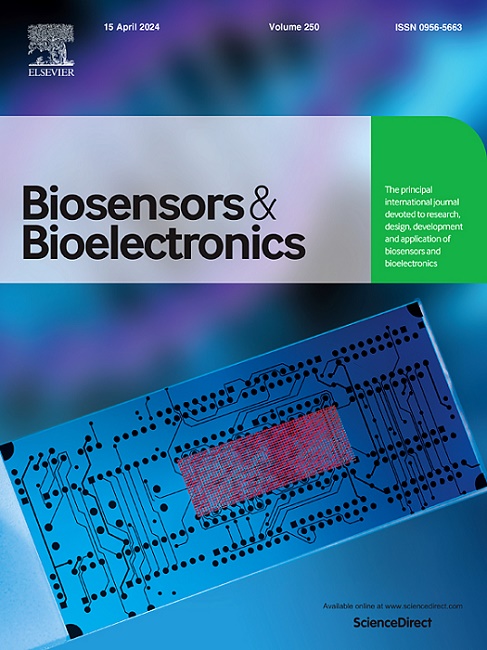An ultrasensitive one-pot Cas13a-based microfluidic assay for rapid multiplexed detection of microRNAs
IF 10.7
1区 生物学
Q1 BIOPHYSICS
引用次数: 0
Abstract
Aberrant microRNA expression is associated with tumor progression in various organs. Detecting microRNAs as clinical cancer biomarkers can facilitate early cancer diagnosis and monitoring. However, the rapid and accurate quantification of microRNAs from biological samples remains a significant challenge. Here we developed a one-pot isothermal assay utilizing a molecular circuit with CRISPR/Cas13a (CRISPR-circuit) to rapidly convert, amplify and report different microRNAs within 15 min at the attomolar (aM) level. Then the full process was performed on an active centrifugal microfluidic chip and its corresponding portable equipment for parallel detection of multiple microRNAs, including miR-21, miR-141, miR-196a, and miR-1246. We also demonstrated its application for identifying cell lines and clinical samples of cancer patients with varying microRNA levels, which showed a strong correlation with the RT-qPCR. The assay can be easily adapted for the detection of any microRNA by simply modifying the converter primer, thereby holding significant potential for accurate disease detection and clinical diagnosis.
求助全文
约1分钟内获得全文
求助全文
来源期刊

Biosensors and Bioelectronics
工程技术-电化学
CiteScore
20.80
自引率
7.10%
发文量
1006
审稿时长
29 days
期刊介绍:
Biosensors & Bioelectronics, along with its open access companion journal Biosensors & Bioelectronics: X, is the leading international publication in the field of biosensors and bioelectronics. It covers research, design, development, and application of biosensors, which are analytical devices incorporating biological materials with physicochemical transducers. These devices, including sensors, DNA chips, electronic noses, and lab-on-a-chip, produce digital signals proportional to specific analytes. Examples include immunosensors and enzyme-based biosensors, applied in various fields such as medicine, environmental monitoring, and food industry. The journal also focuses on molecular and supramolecular structures for enhancing device performance.
 求助内容:
求助内容: 应助结果提醒方式:
应助结果提醒方式:


